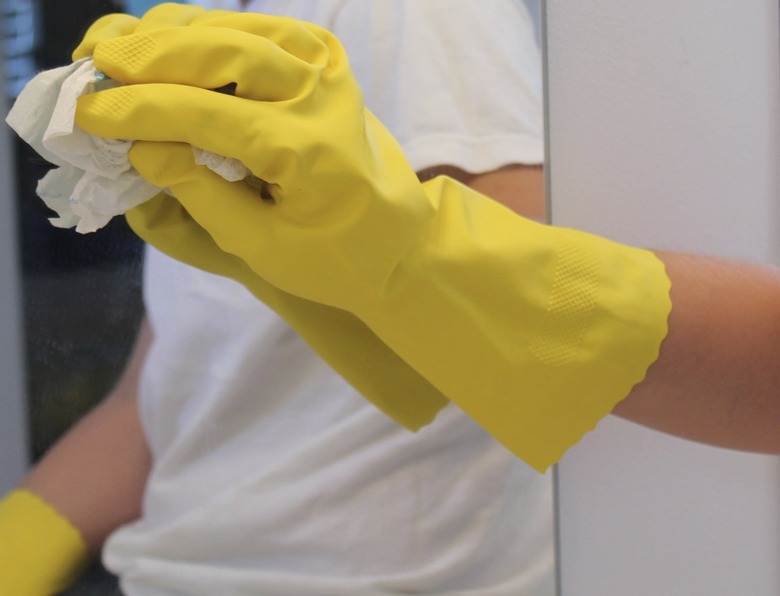What Kind Of Paint Sticks To Mirrors?
Customize an otherwise mundane mirror with paints for a personalized expression of home decor. While many types of paint stick to mirror glass, some adhere better than others, such as glass paints or craft enamels. If you aren't completely confident about painting on mirror glass, practice on an old scratched mirror or a discount-store find to test the paint's opacity and color first.
Cleaning Is Key
Cleaning Is Key
No matter which type of paint you wish to use on a mirror, the glass must be completely clean, otherwise the paint may be marred by dust particles or it may not adhere well at all. Wipe the mirror glass with a damp microfiber cloth to remove dust. Dip the cloth in mildly soapy water using a gentle liquid dish soap if the mirror requires a bit more cleaning. Squeeze out the excess moisture before wiping the mirror down to prevent water from dripping between the glass and frame on a framed mirror. Wipe the glass dry with yet another microfiber cloth. Remove greasy residue and fingerprints with rubbing alcohol applied with a microfiber cloth.
Glass Paint Perfection
Glass Paint Perfection
Glass paint, as the name implies, is designed specifically for glass surfaces including mirrors. Some brush-on glass paints behave a bit differently than similar craft paints in that they look translucent when brushed on in one coat. Read labeling and the package carefully to ensure the paint suits your design idea — a translucent finish designed for stained-glass effects isn't going to offer the same look on a mirror since you can't see through the mirror. Opt for opaque glass paints for rich colors. Glass paint is even available in a chalkboard finish, which allows for playful effects such as a chalkboard talk bubble where you can write your own messages to leave for others who look into the mirror. Choose only glass paints that cure without heat — some suggest oven-curing, which may not be safe for the finish on the back of the mirror or for its frame.
Acrylics and Enamels
Acrylics and Enamels
Acrylic and water-based enamel craft paints stick to mirrors and provide a similar look once the paint dries. Enamel paint dries a bit harder and is washable once cured, but it requires a lengthy curing time by air — as much as three weeks — before you should wash or touch the painted area. Acrylic paint is easy to scrape off glass when dry, but on a mirror this should not be an issue. In either case, apply the paints with artist's brushes or a narrow, soft-bristled paintbrush. Once the paint dries, a fresh color may be painted atop it, such as details on a bumblebee or flowers on a flowering vine design. Either paint also works with stencils or with painter's tape used to plot out designs such as chevrons or geometric shapes.
Spray Paint Simplicity
Spray Paint Simplicity
Spray paint comes in handy if painting a sizable portion of a large mirror, such as creating diagonal stripes or a large silhouette in the middle of a mirror for an artsy wall hanging. Cover any areas you wish to keep paint-free with painter's tape, then cart the mirror outdoors or to a well-ventilated area. Place the mirror atop newspapers or a tarp and rest the mirror flat, otherwise the paint may run a bit if you spray a bit too heavily. Use thin, overlapping bursts of paint, starting slightly before the mirror and ending slightly beyond it. Hold the can 12 to 18 inches from the mirror for best results.
Writing on the Mirror
Writing on the Mirror
Oil-based paint markers and markers designed specifically for glass and ceramics allow you to write or doodle your design on the mirror, much as you would with any marker. Choose a brand that does not require an oven for curing. Sketch your design on paper first, if desired, then draw it onto the mirror glass. Paint markers that are designed to be permanent draw in bold, vivid colors, much like traditional permanent markers.
